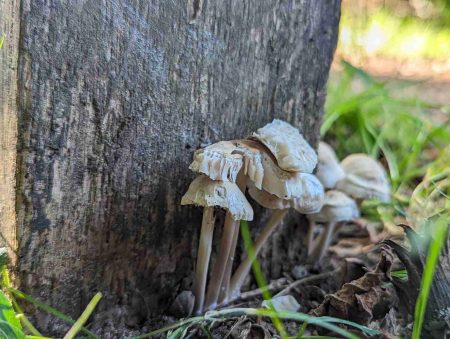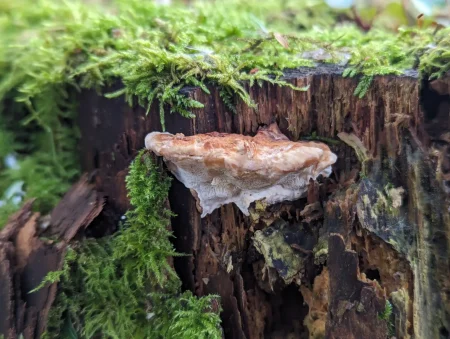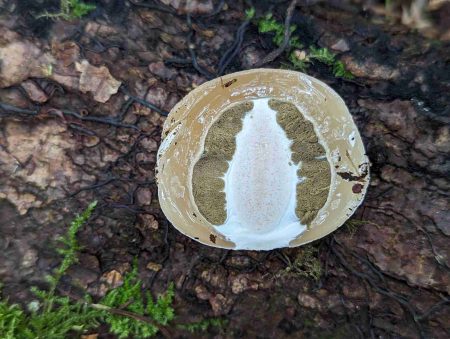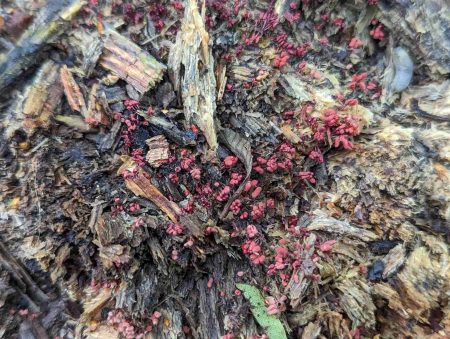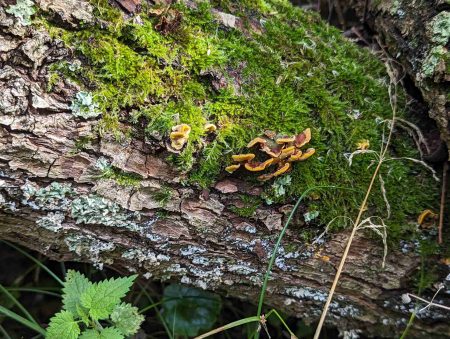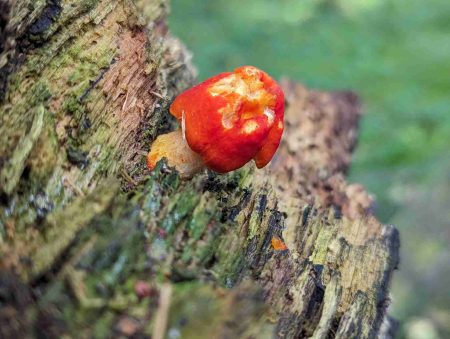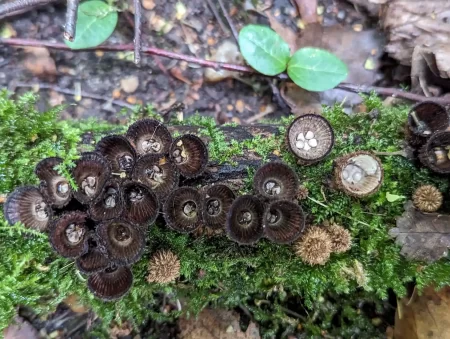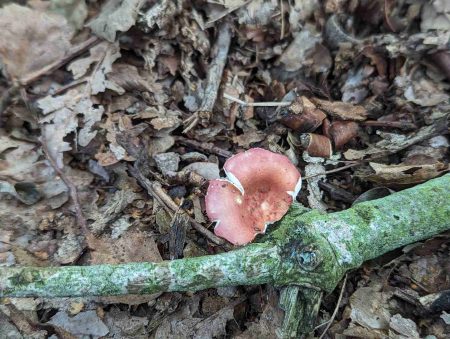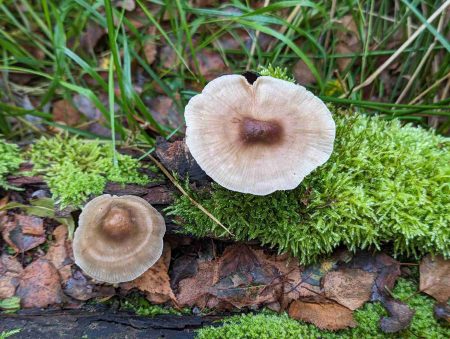Including 1st October 2023
I originally planned on just doing the 30th September, but the next day — 1st October — was the Strumpshaw Fungi Walk led by the Norfolk Fungus Study Group so I decided to merge both days into one.
I’ve only shown a few of the fungi found on the 1st, and if you would like to have a more accurate and concise list of the fungi of Strumpshaw Fen, you can visit the Norfolk Fungus Study Group website list for Strumpshaw Fen.
ENTRANCE AREA
On the path from the car park to the train-track crossing, I found a group of fungi (Fig. 9.0) growing from beneath a bollard.
In the entrance yard, I saw the Agaricus from previous weeks.
Just off the entrance path, the Datronia and the unidentified white fungi were still there.
Further along the entrance path I spotted a small group of Laccaria laccata and a singular Parasola plicatilis.
BASECAMP AREA
On the Basecamp Loop, I found the unidentified slime mould from previous weeks, as well as a small group of Arcyria cinerea.
There was a large group of Laccaria laccata in the grass and an unidentified, blob fungus (now identified as Ganoderma applanatum) on a rotting stump (Fig. 9.1).
On the path down to Basecamp, I found an uprooted Entoloma fungus (Fig. 9.2).
Nearby, on the same log from previous weeks, the unidentified slime mould was still there, as well as a new Stemonitis group (Fig. 9.3).
In Basecamp, I saw the Dacrymyces stillatus, and found a large group of Stemonitis axifera (Fig. 9.4) covering an entire log.
The Ramaria stricta was still there.
Entoloma species
Basecamp
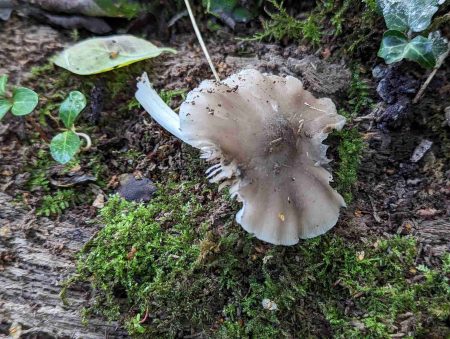
Figure 9.
Stemonitis species
Basecamp
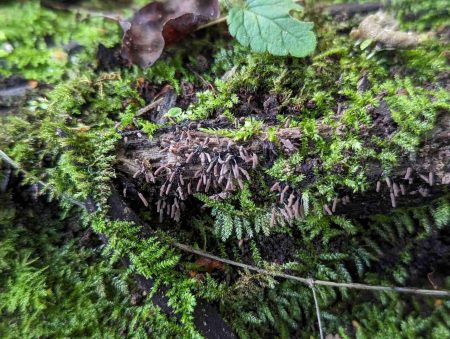
Figure 9.
Stemonitis axifera
Basecamp
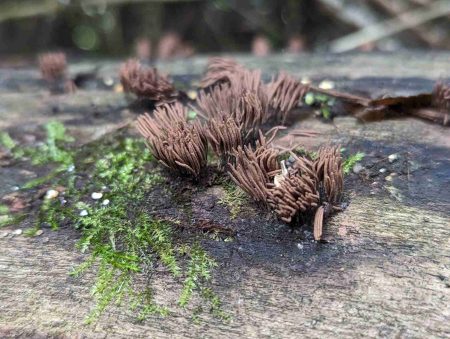
Figure 9.
THE DELL
In the Dell, the draping Fuligo septica had turned into a mass of light brown spores and, nearby, I spotted a large group of Coprinellus disseminatus (Fig. 9.5).
By the branch circle, I found an uprooted Russula ochroleuca and Mycena galericulata from last week.
In the open leaf litter, I saw a group of pale Laccaria laccata, another R. ochroleuca (Fig. 9.6) and, on the raised perimeter of The Dell, I found a bolete that had been parasitized by Hypomyces chrysospermus (Fig. 9.7).
I also spotted a Coprinopsis lagopus and Parasola plicatilis on the leaf litter, as well as the Calocera cornea from last week.
Coprinellus disseminatus
The Dell
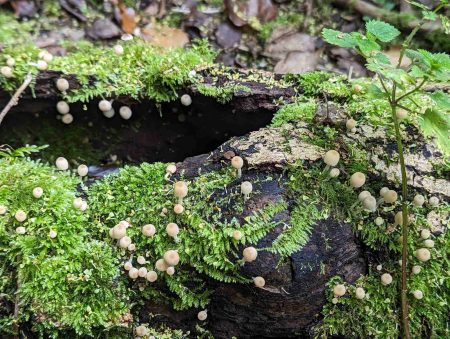
Figure 9.
Russula ochroleuca
The Dell
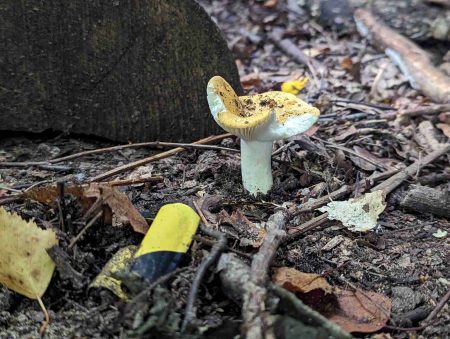
Figure 9.
Hypomyces chrysospermus
The Dell
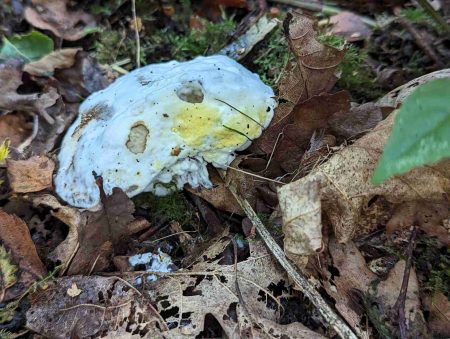
Figure 9.
SANDY GLADE AREA
On the path to the Gnarly Oak, the Leucocoprinus brebissonii was still there, and I spotted another, juvenile Russula ochroleuca.
On the Strumpshaw Fen fungus walk — just left of the path leading to the Sandy Glade clearing, I spotted a Phallus impudicus egg (Fig. 9.9) and a large group of Arcyria denudata (Fig. 9.8) on a ground level, rotting stump.
The Hemitrichia clavata ( changed from H. calyculata following a discussion with a Norfolk Fungus Study Group member ) had decreased in size, and beside them, the group of Trametes versicolour remained the same.
I spotted more Fuligo septica aethalia on a rotting log to the right of the path.
ENCLOSED AREA
On the Drainage Channel Path, I saw a group of Stereum hirsutum (Fig. 9.10).
In the Enclosed Area, I found a large group of Tricholoma fulvum and two more Hygrocybe conica further in.
The Picipes badius found in previous weeks had decayed.
The Thelephora penicillata and Leota lubrica were still there.
On the bench by the drainage channel outside the Enclosed Area, a group of Calocera cornea grew in the split of the wood.
YEW GROVE AREA
On the side of the path, the Inocybe geophylla from last week was still around.
Off the path just after the Yew Grove, I spotted a distinctive Pluteus aurantiorugosus (Fig. 9.11).
An exciting moment was when someone on the Strumpshaw Fen fungus walk came out from the wooded area holding a small branch upon which grew a group of Cyathus striatus — the Fluted Bird’s Nest (Fig. 9.12).
Further in the wooded area there was more C. striatus on rotting, mossy branches.
Along the path I noticed Parasola plicatilis and Daldinia concentrica, Laccaria bicolour and Calocera cornea.
OUTPOST AREA
In the Outpost, I spotted a Russula betularum (Fig. 9.13), then — just after The Outpost — I found a group of large Mycena (Fig. 9.14) on a mossy log, another Fuligo septica aethalium and more Leucocoprinus brebissonii.
TRAIL END AREA
On a log pile, I found a line of Fuligo septica plasmodium, a Stemonitis group and the Arcyria cinerea from previous weeks.
On a fallen conifer trunk, I saw a large group of Lycogala epidendrum (Fig. 9.15).
At the end of the trail, I spotted what I think were two juvenile Gymnopus fungi (Fig. 9.16), a de-headed Phallus impudicus and a P. impudicus egg (Fig. 9.17).
Lycogala epidendrum
Trail End Area
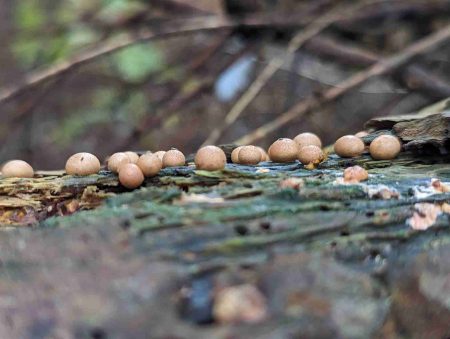
Figure 9.
Gymnopilus junonius
Trail End Area
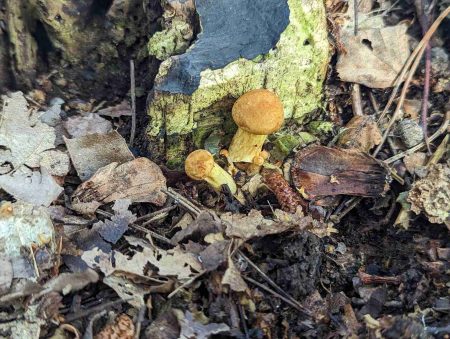
Figure 9.
Phallus impudicus
Trail End Area
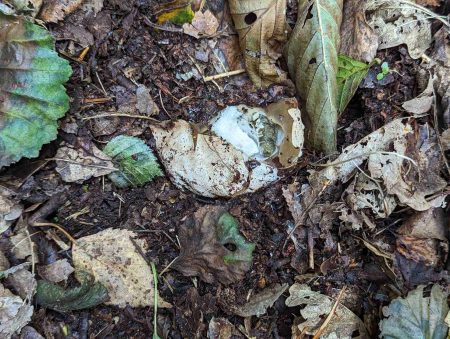
Figure 9.
OTHER
The Hydnum repandum was still around, and I saw a de-capped Leccinum scabrum (Fig. 9.18).
The Ceratiomyxa fruticulosa and Scleroderma citrinum were abundant throughout the area.
Aside from the usual Chlorociboria, I spotted several more Chlorociboria fruit-body groups on various pieces of wood all over the woodland after the Yew Grove.
Leccinum scabrum
Everywhere
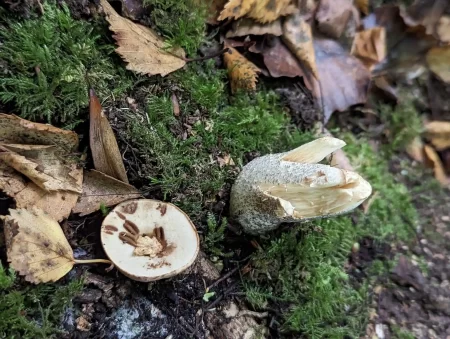
Figure 9.
Fuligo septica
Everywhere
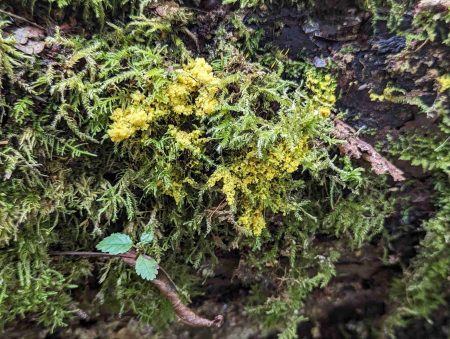
Figure 9.
Arcyria cinerea
Everywhere
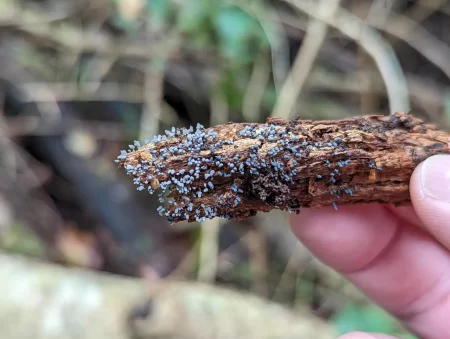
Figure 9.
Laccaria laccata
Everywhere
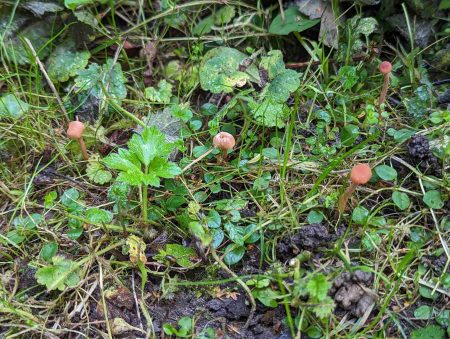
Figure 9.
